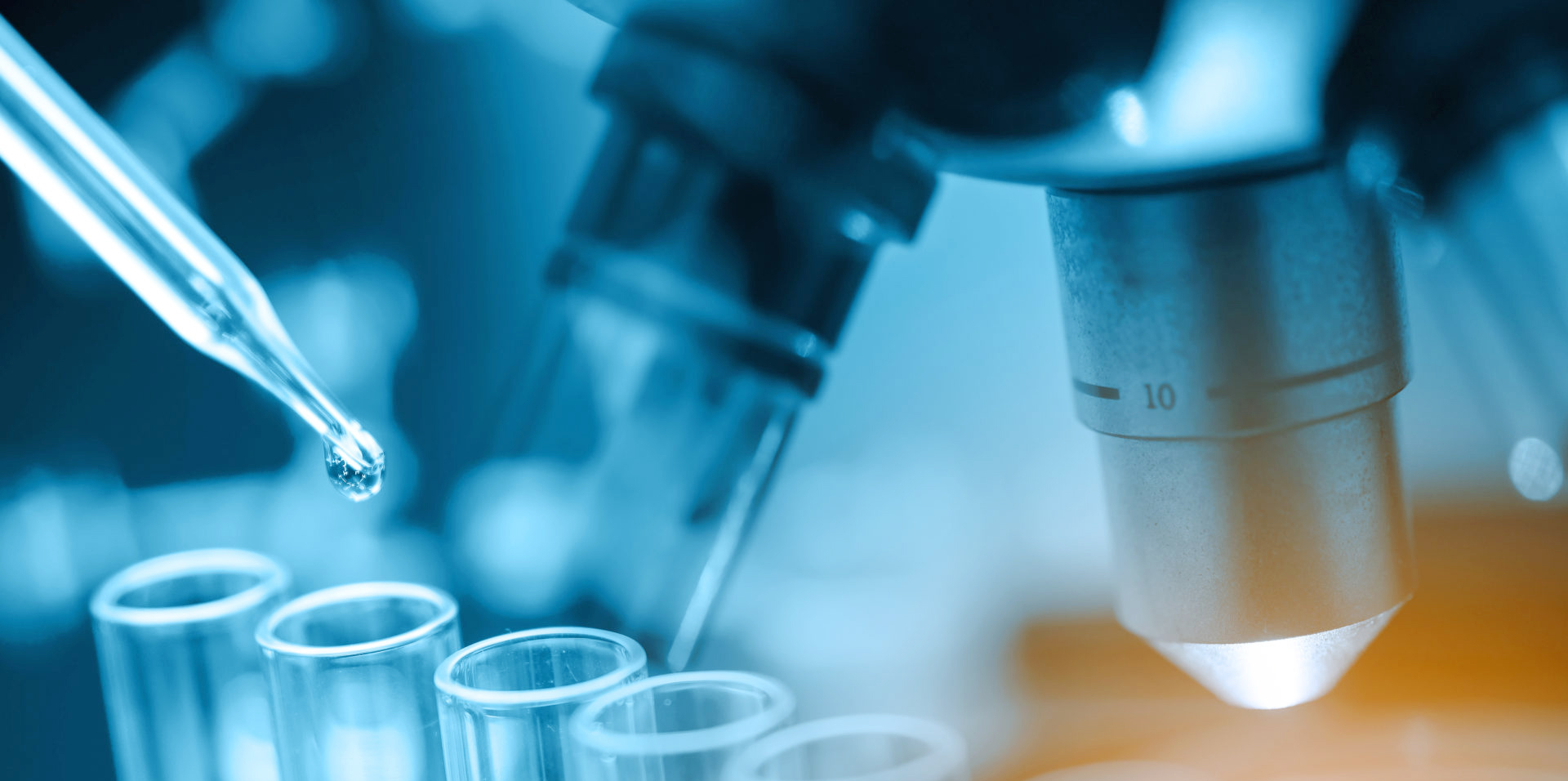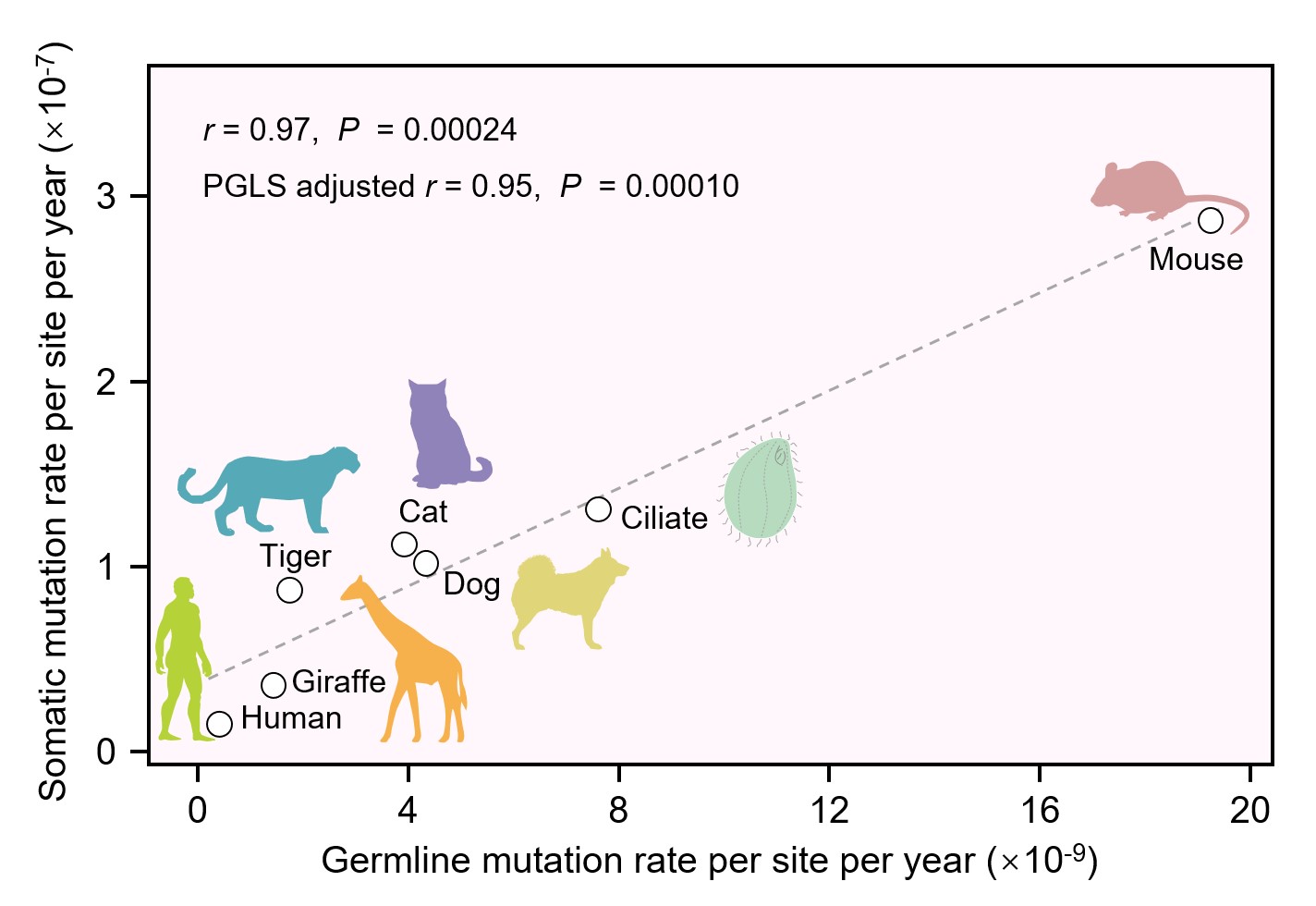
Newsroom
Somatic and Germline Mutation Rates Covary Linearly across Ciliates and Mammals
Somatic mutations are known to contribute to cancer development and can influence organismal longevity. In humans and other mammals, the mutation rate per site per year in somatic cells is at least tenfold higher than that in germline cells. Because the DNA replication and repair machinery is largely shared between the germline and soma, their substantial disparity in mutation rate is commonly hypothesized to be owing to their different cell division rates and/or differential mutagen exposures. However, this prevailing hypothesis has not been critically assessed because of the difficulty in experimentally manipulating the cell division rate and/or mutagen exposure across cell types in mammals.
Ciliates are a diverse group of protozoa, encompassing over 8,000 described species. Despite being unicellular, all ciliates exhibit germline-soma nuclear differentiation. The germline and somatic nuclei in a ciliate share the same cytoplasmic environment, and the genomes they contain replicate the same number of times during asexual growth. This configuration minimizes differences in DNA replication rate and mutagen exposure between the germline and somatic genomes, allowing a direct test of contributions of these factors to the disparity between germline and somatic mutation rate.
In a study published in Current Biology on August 14, research teams led by Prof. MIAO Wei at the Institute of Hydrobiology (IHB) of the Chinese Academy of Sciences, and Prof. Jianzhi Zhang at the University of Michigan, estimated the somatic mutation rate in a ciliate and discovered a linear correlation between germline and somatic mutation rates across ciliates and mammals, rejecting common explanations on why germline and somatic mutation rates differ.
Performing mutation accumulation experiments in the model ciliate Tetrahymena thermophila, researchers established 10 cell lines that underwent ~600 asexual generations. Given the somatic genome is about 90-ploid and exhibits substantial inter-copy variation, they conducted extremely high-coverage whole-genome sequencing and developed a dedicated mutation-calling pipeline. After validating candidate mutations, they estimated that the somatic mutation rate in T. thermophila is 17.3 times the corresponding germline rate.
They then analyzed the somatic mutation spectrum in T. thermophila and found that its overall pattern closely resembles that of mammals. Interestingly, the mutation rate was significantly higher in genic than in intergenic regions. To pinpoint potential causes, they examined nucleotide context, gene expression, and nucleosome occupancy. The results suggest that enriched nucleosome distribution within gene bodies may contribute to the elevated genic mutation rate. More strikingly, they found a strong linear correlation between germline and somatic mutation rates across T. thermophila and six mammals.
This study offers the first somatic mutation rate estimate in unicellular eukaryotes, argue against common beliefs of causes of the germline-soma mutation rate disparity, and unveil potentially universal linear coupling between germline and somatic mutation rates.

Linear relationship between germline and somatic mutation rates across ciliates and mammals (Image by IHB)
(Editor: MA Yun)